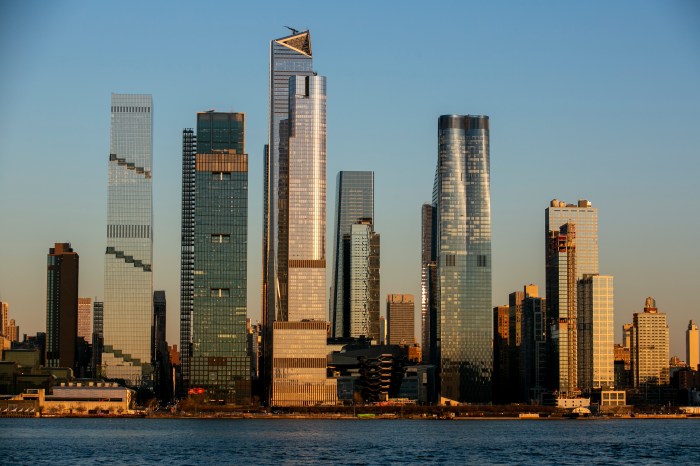By the TimesLedger Staff
On Sept. 11 no buildings fell in Queens, but the psychological, emotional and monetary tremors resounded throughout the borough that day and during the last six months since the worst terrorist attack on American soil took place.
A group of 19 hijackers took control of two commercial airliners leaving Boston’s Logan Airport on that bright September morning and crashed them into the World Trade Center’s Twin Towers. In less than an hour, each building fell, trapping thousands of civilians trying to get to safety and hundreds of rescue workers rushing in to help people.
While life has resumed as much normalcy as could be expected after nearly 3,000 people were killed in the collapse of the towers, the Sept. 11 attack left its indelible mark on the nation’s most ethnically diverse county.
From the hundreds of borough residents — civilians, police officers, firefighters and emergency workers — who were killed, to Queens’ airports, schools, immigrants and businesses, the county has experienced numerous changes. The attacks also worsened the city’s economic slump and forced many nonprofits to go without funding as the city and state worked to rebuild Lower Manhattan.
As Queens and the rest of the city were still reeling from the trade center attacks, the borough played host to its own carnage when American Airlines Flight 587, bound for the Dominican Republic, crashed into the residential community of Belle Harbor, killing 265 people.
Monday’s six-month anniversary of the World Trade Center attack brought some now familiar rituals, including the funeral of a Belle Harbor firefighter in the Rockaways, moments of silence and tributes throughout the city.
Queens felt the changes from Sept. 11 most quickly and severely in two spots: its airports and its highways.
LaGuardia Airport and John F. Kennedy International Airport have since been involved in the double-edged sword debate surrounding the nation’s airline industry: how to drum up the business that plummeted after Sept. 11 and ensure security.
Greg Trevor, a spokesman for the Port Authority, which runs the airports, said traffic is still down but returning to normal.
“Passenger volumes have been climbing steadily, which demonstrates the traveling public’s rising confidence in air travel,” Trevor said.
Paul Turk, spokesman for the Transportation Securities Administration, said his agency has been working to train federal security agents for airports. JFK is part of a test group of 19 airports aimed at finding best combination of security measures, he said, while security personnel at LaGuardia are being monitored.
In the days following the destruction of the Twin Towers, former Mayor Rudolph Giuliani banned single-occupancy vehicles from using the bridges and tunnels below 63rd Street during the morning rush hour. Mayor Michael Bloomberg said he would look at repealing the SOV rule this summer.
City Councilman David Weprin (D-Hollis) has called for the ban’s elimination, claiming it is “financially disastrous for New York City.”
The city’s economic plight has become more acute after Sept. 11, with budget cuts looming over every agency and leaving nonprofit organizations that depend on supplemental funding out in the cold.
As Queens’ overcrowded classrooms deal with delayed school construction from those budget cuts, its students have given voice to the city’s hopes for the future.
Whether through murals reflecting student’s patriotism, special concerts designed to provide healing for the community or school buildings draped in red, white and blue, the borough’s public schools have become a place of emotional refuge.
Board of Education spokeswoman Margie Feinberg said “we’re also encouraging schools to incorporate a curriculum of tolerance.”
Tolerance has been a key issue for one of Queen’s most significant populations: its immigrants.
A borough of more than 2 million people which prides itself on ethnic diversity, Queens’ immigrants faced harassment that began almost immediately after the tragedy.
On Sept. 13, Karin Afghanzadah, owner of the Afghan Choupan Kabab Restaurant on Main Street in Flushing, came to work to find the outer wall of his restaurant smashed.
Sikhs, who wear beards and turbans that cause people to mistake them for the Taliban, faced the most severe anti-immigrant violence in Queens. In the weeks after Sept. 11 a 66-year-old Sikh man was beaten with a baseball bat, and a 58-year-old Sikh man was stabbed repeatedly by youths who told him to go home.
As immigrants struggle with violence, the borough’s businesses have endeavored to survive the current economic slump.
The Small Business Administration has approved 300 loan applications for businesses in Queens that absorbed the Sept. 11 attacks directly in the pocketbook, an infusion of funds that amounts to nearly $20 million.
The financial pain was felt far and wide, with companies ranging from a printer in Long Island City to a farm entertainment company seeking SBA assistance to get through a severe downturn — in addition to other businesses directly tied to the airports, like suppliers and repair shops.
In some industries the hardship continues. Drivers of taxicabs and limousines, most of them immigrants from the Middle East and Muslim countries, were initially hesitant to hit the streets because of an onslaught of bias crimes.
The need for their services — especially the limousines — remains extremely depressed because many of their customers were tied to financial companies in Lower Manhattan.





























